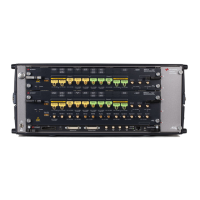Keysight M8070A Programming Guide 21
Programming Basics 1
Using Identifiers
There are three different types of Identifiers:
• Location
• Group Name
• Measurement Name
Location Identifiers
When an instrument has several output channels with identical
capabilities or a subset of capabilities and has more than one module, the
selection of which module/channel to use is done using its location
identifier.
The location identifier is a predefined notation that can be used to address
certain properties, like high level, low level etc., of channels. The location
identifier is surrounded by single quotes (‘identifier’) or double quotes
(“identifier”). A location identifier will be appended to a SCPI command
followed by its argument(s). The location identifier addresses the
corresponding components. The location identifier consists of two parts:
the first part specifies the module, the second part addresses, in most
cases, a visible ‘component’ of a module, like an input or output connector.
For example, SCPI command :OUTP ‘M1.DataOut1’, OFF turns channel 1
(DataOut1) of module 1 (M1) output off.
If a SCPI command is to be sent to a specific module only and not a
specific channel, simply use “M1” or “M2” as the location identifier.
If you want to set a value that acts on all components of a modular
instrument (for example, set all jitter sources to off), omit the location
identifier.
Multiple Source Per Channel Identifier
Some features have multiple sources per channel. To identify these
sources, the “(*)” suffix is used.
For example, there are two periodic jitter sources per channel in a module.
The following SCPI command specifies periodic jitter source 2 as the
source for module 1/data out channel 1:
[:SOURce]:JITTer:PERiodic2[:STATe] ‘m1.dataout1’,ON

